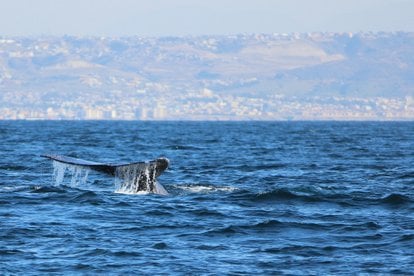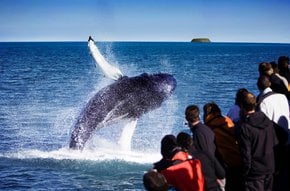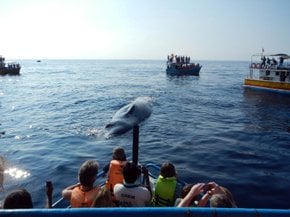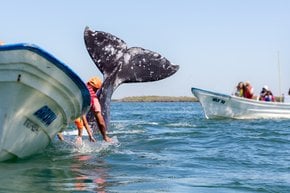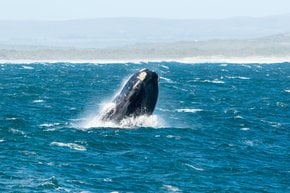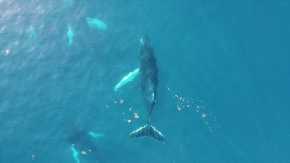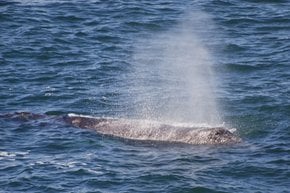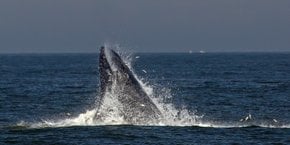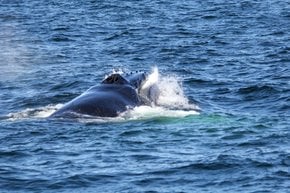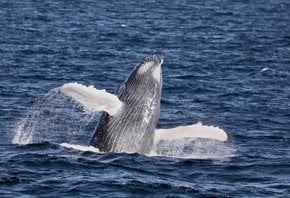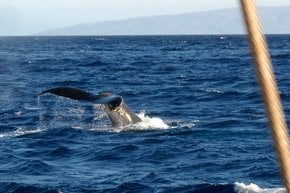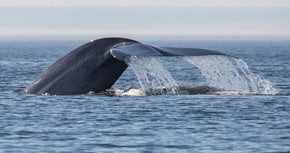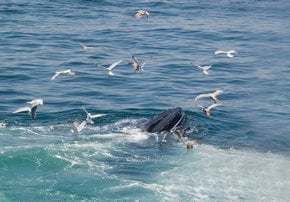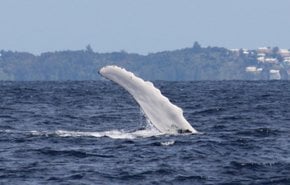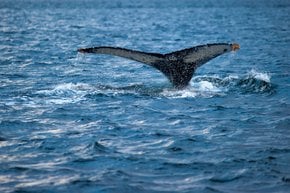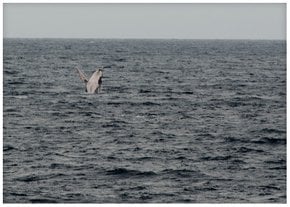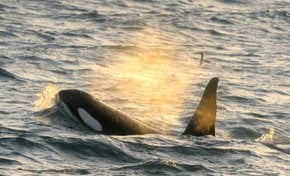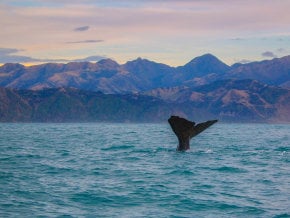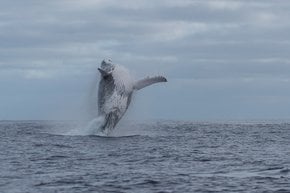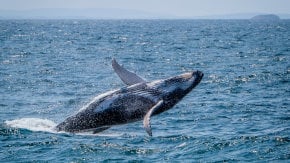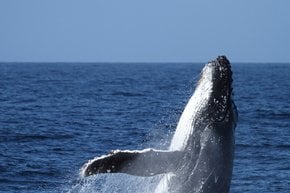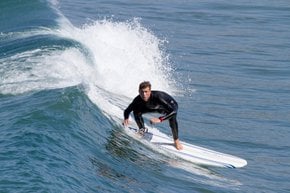Whale Watching in San Diego 2025-2026
San Diego is a great place to see ocean-faring mammals
Best time: mid-June–September | mid-December–April
Every winter and spring, nature fans from San Diego are able to view the annual gray whale migration. Thousands of gray whales move along the West Coast to reach the warm lagoons of Mexico. The purpose of this 621 mi (10,000 km) journey is for breeding and calving. After spending about a month in Mexico, they return north to their feeding grounds in the Bering Strait of Alaska. If you want to catch a glimpse of females with their calves, it's best to go late in the season as they head back with their newborns.
Whale-Watching Season
From mid-December to April, over 20,000 gray whales embark on a 10,000-mile round-trip journey from Alaska to the lagoons of Baja California, where females give birth to their calves. Additionally, San Diego hosts another whale migration during the summer and early fall, from mid-June to September, when blue whales pass through the area. This makes whale watching in San Diego an almost year-round activity, offering unique opportunities to witness these majestic creatures in different seasons.
Best Places For Whale Watching
During the whale watching season, there are plenty of ways to see the migration in San Diego, and you don't have to go far. Most whale-watching tours are quite short, and the chances to see whales are high. Cruises include all kinds of boats and rafts. You can even take a tour on a kayak and paddle as close to whales, seals, and sea lions as possible.
Whale-Watching Tours
Many whale-watching tours in San Diego provide detailed information about whale migration patterns and behavior, enhancing the experience for participants of all ages. These tours are a great addition to your San Diego itinerary, particularly during the winter, early spring, and summer seasons. Depending on your preference, you can choose from various types of tours, including those on sailboats or larger vessels with indoor seating. Some operators even offer guarantees, such as vouchers for future tours if no whales are spotted. Whale-watching tours in San Diego generally range from 2.5 to 4 hours and are priced around $50 to $100 for adults. Some operators offer options for different types of boats, including sailboats and larger vessels with indoor seating. Certain tours may include guarantees or vouchers for future trips if no whales are sighted.
Shoreline Spots
For those who prefer whale watching from the shore, several prime locations around San Diego offer excellent views. In La Jolla, the Birch Aquarium at Scripps and Torrey Pines State Reserve are standout spots for catching glimpses of migrating gray whales. He hiking trails at Torrey Pines State Reserve offer expansive vistas of the ocean. At Cabrillo National Monument, Whale Watch Lookout Point provides a commanding view from 420 feet above the Pacific, ideal for spotting whales. With a pair of binoculars, you can enjoy these scenic viewpoints and enhance your whale-watching experience without leaving the shore.
Whale-Watching Tips
Most whale-watching tours are dedicated to ensuring your comfort and enjoyment. To enhance your experience, consider bringing a few essentials, even if you're relaxing on the beach and scanning the seas.
What to Wear
Dress in layers for your whale-watching trip, as it can get chilly on a windy day. A waterproof jacket, closed-toed shoes, and long pants will keep you comfortable. Don’t forget to protect yourself from the sun with sunglasses, a hat, and sunscreen.
What to Bring
To enhance your whale-watching experience, consider bringing binoculars and a camera for better views. It's also wise to have motion sickness medication on hand, just in case. Since whale-watching trips can last up to four hours, be sure to pack some snacks and a beverage to stay hydrated and energized.
Where to Stay
San Diego offers a wide range of accommodations to fit various needs and preferences. From luxury hotels and beach resorts to budget motels, hostels, bed and breakfasts, and campgrounds for the more adventurous, you can find something that suits you. For a comprehensive list of options, visit San Diego’s official accommodations directory.
Photography Tips
Capturing a picture of a whale requires patience, observation, and quick reflexes. Start by studying the whale's behavior. For example, when feeding, whales often create a frenzy among diving birds—if you spot this, be prepared for a potential lunge or trap feeding moment. Position your focus on the area where the birds are most active, as the whale may surface suddenly. For action shots, like breaching or tail fluke displays, watch for key signals. A whale arching its back higher than usual often indicates it's about to dive deep, providing a prime opportunity for a tail shot. Breaching can be more unpredictable, but if a whale breaches once, it might do so again, so stay ready. Lens choice is also important. A wide-angle lens is great for capturing the whale in its vast ocean environment, offering context and scale. For closer action, a lens with a shorter focal length is easier to manage, as it provides a wider field of view, making it easier to track and focus on the whale.

